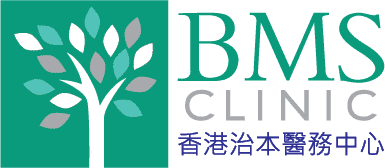Exploring the Supportive Role of Cordyceps Sinensis During Cancer Recovery
Exploring the Supportive Role of Cordyceps Sinensis During Cancer Recovery
For
individuals recovering from cancer, the journey doesn’t end with the completion
of treatment. Fatigue, weakened immunity, emotional strain, and overall
physical depletion often persist well into the post-treatment phase. In this
context, integrative and supportive approaches have gained growing interest.
Among them, Cordyceps Sinensis, a traditional medicinal fungus, has
emerged as a natural candidate for enhancing post-treatment wellness.
Active Compounds and Properties of Cordyceps
Sinensis
Cordyceps
Sinensis is a symbiotic complex of a parasitic fungus and caterpillar, known
for its rich variety of bioactive constituents:
- Cordycepin
(3’-deoxyadenosine): May support immune modulation, cellular repair, and oxidative
balance.
- Polysaccharides: Known for
enhancing immune response and promoting resilience against infections.
- Adenosine: Plays a role in
energy metabolism and may help reduce fatigue.
- SOD-promoting
agents: May assist in neutralizing free radicals and supporting cellular
protection.
Potential Applications in the Recovery Phase
- Immune System
Support
Cancer treatments like chemotherapy and radiation often impair immune defenses. Some studies suggest Cordyceps Sinensis may enhance the activity of natural killer (NK) cells and T-lymphocytes, contributing to better immune balance during recovery. - Reducing Fatigue
and Boosting Vitality
Post-treatment fatigue is common and often persistent. Cordyceps has demonstrated potential in boosting mitochondrial function and energy production, which may help alleviate physical exhaustion. - Supporting Liver
and Kidney Function
As key organs for detoxification, the liver and kidneys can benefit from Cordyceps’ mild regulatory effects, which may assist in processing metabolic waste and treatment residues. - Managing Stress and
Emotional Well-being
Recovery also involves mental and emotional healing. Components in Cordyceps may play a subtle role in supporting nervous system balance, which could ease anxiety and improve sleep quality.
Usage Considerations
- Ensure Product
Quality: Choose products from reputable sources with third-party testing
to avoid contaminants such as heavy metals.
- Individualized
Approach: Since patient responses vary, personalized usage under
professional guidance is recommended.
- Integrative Use: It is important
to consult with healthcare providers when combining Cordyceps with ongoing
medications to avoid potential interactions.
Conclusion
Cordyceps
Sinensis presents an intriguing option for supporting wellness during the
cancer recovery phase. While it is not a replacement for conventional
therapies, it may serve as a gentle and holistic aid when integrated
thoughtfully. With continued research, its mechanisms and applications may
become even more defined, potentially offering broader options in post-cancer
care.
References
- Paterson, R. R. M.
(2008). Cordyceps – A traditional Chinese medicine and another fungal
therapeutic biofactory? Phytochemistry, 69(7), 1469–1495.
- Koh, J. H., Yu, K.
W., Suh, H. J., & Choi, Y. J. (2003). Antifatigue and antistress
effect of the hot-water fraction from mycelia of Cordyceps sinensis.
Biological & Pharmaceutical Bulletin, 26(5), 691–694.
- Nakamura, K.,
Shinozuka, K., & Yoshikawa, N. (2015). Anticancer and
antimetastatic effects of Cordyceps: a review. Journal of Cancer
Metastasis and Treatment, 1(1), 39–52.
- Tuli, H. S., Sharma, A. K., Sandhu, S. S., & Kashyap, D. (2014). Cordycepin: Abioactive metabolite with therapeutic potential. Life Sciences, 93(23), 863–869.
Medical Disclaimer:
The information provided in this article is for educational and reference purposes only and does not constitute medical advice or be used as a substitute for professional medical diagnosis, treatment, or advice. ALWAYS CONSULT ANY QUESTIONS YOU MAY HAVE ABOUT YOUR MEDICAL CONDITION OR MEDICAL PROBLEM THAT YOU HAVE ALWAYS CONSULT YOUR PHYSICIAN OR OTHER QUALIFIED HEALTH PROFESSIONAL. The content of this article is not intended to recommend any specific test, treatment, or medication and should not be construed as such. If you develop symptoms or require medical assistance, please contact a healthcare professional promptly.
